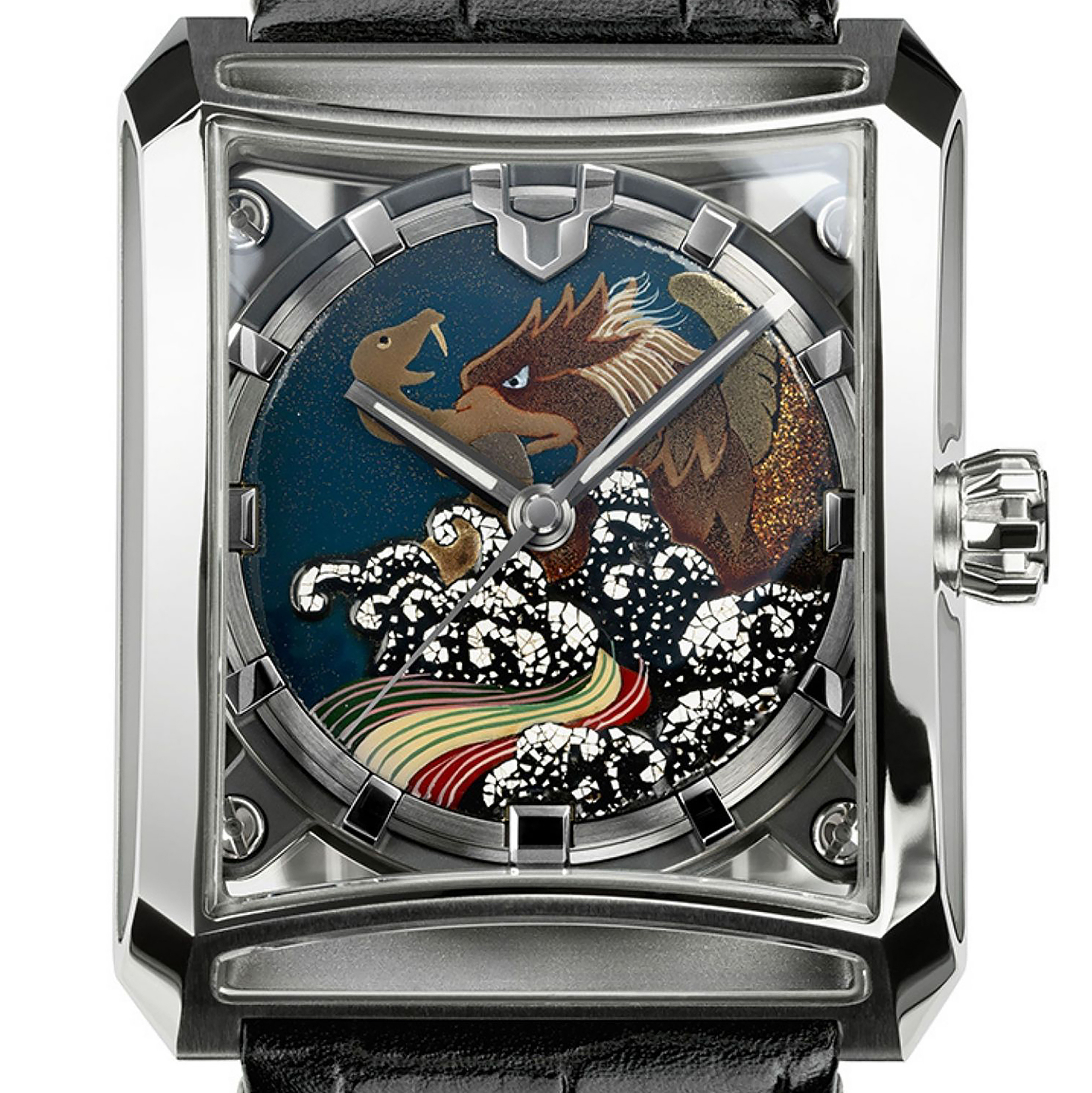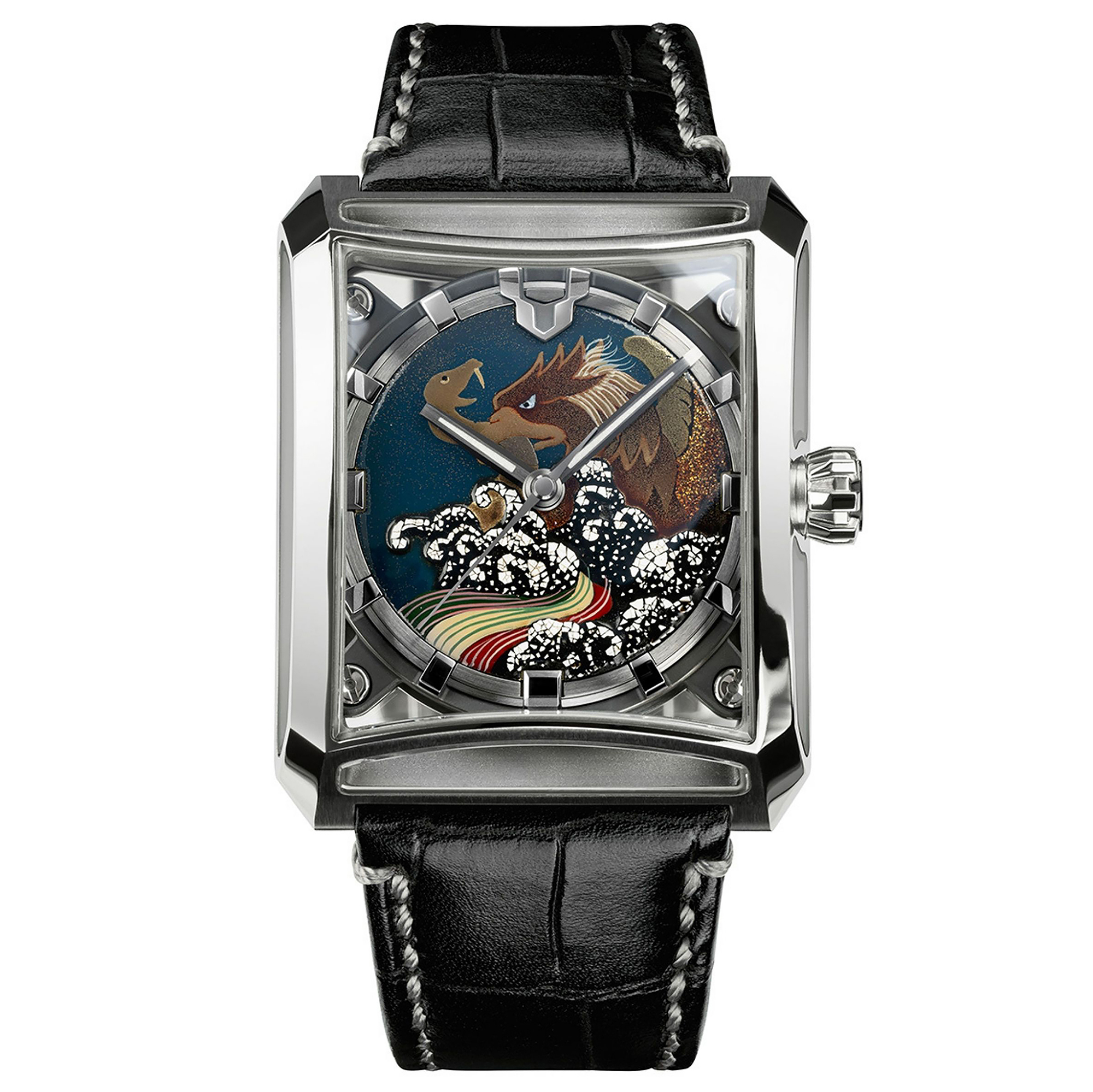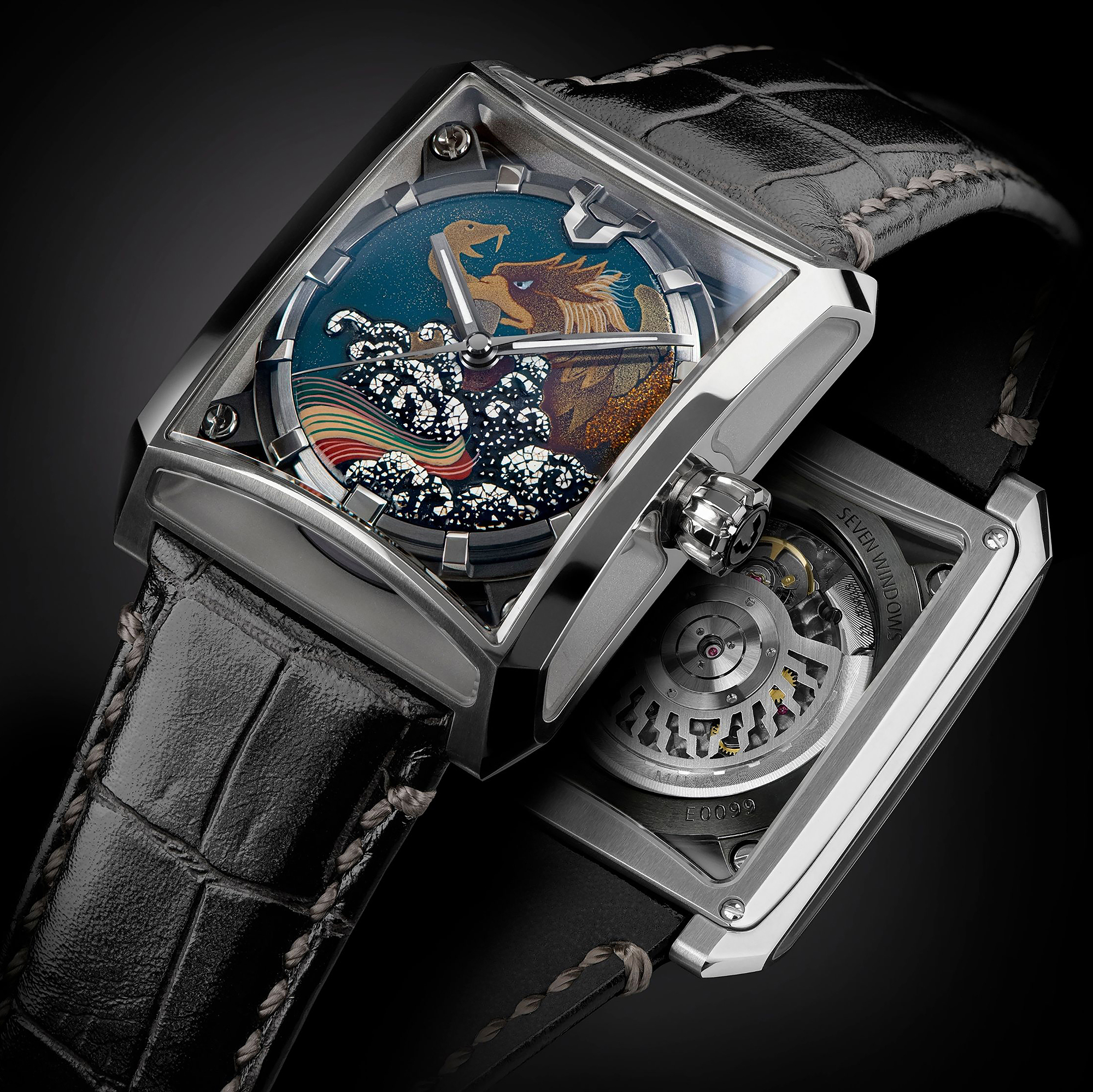
Mexico Limited Edition
Power reserve: 50 h, 28800 vph
Shared Values Between Japan & Mexico
The Mexico Limited Editions blends Japanese traditional craftsmanship and the rich heritage of Mexican civilization. Both Japanese and Mexican cultures place great value on tradition and fine craftsmanship. Both countries share a deep appreciation for artistic expression and culture. Through the Mexico Limited Edition, Minase affirms its commitment to embracing diversity and fostering cultural connections. This limited-edition release represents a union of cultures that transcends geographical boundaries, it was created for Minase’s entry on the Latin-American market.
Seven Window Collection
The model used for this special edition is the 7 Windows. So called because of the seven sapphire windows incrusted all around the case, the watch offers an impressive view on the dial and movement from every angle. Minase uses stainless Steel 316L and finishes each piece by hand with the sallaz polishing technique (also known as Zaratsu or black polish).
The Process of dial decoration
A first layer of Urushi lacquer is applied and heated to prevent the dial from future oxydation and rusting. The procedure is repeated two to three times. The craftsman, Junichi Hakose, then starts decorating the dial, alternating between painting, gold spreading (makié) and placing flat flakes of gold (hirame), particles of shell or quail egg. The process takes time as the paint and lacquer need to dry after every step of the dial decoration. The Artist Urushi Master Junichi Hakose is one of the most internationally acclaimed Japanese lacquer artists. He runs his own workshop and takes several trainees to pass on his knowledge. His work with Minase is the first time he worked on watch dials. He usually focuses on kitchenwares, pens, and other luxury items.
The Design : Bandera de Mexico and Seigaiha
The dial is inspired by the Mexican coat of arms, itself based on the Aztec symbol for Tenochtitlan (now Mexico City). Instead of sitting on a cactus, the eagle stands on a Seigaiha, a pictorial representation of the wave, a symbol of good luck in Japan. The artist also designed a green, yellow and red path as a bridge between Mexico and Japan.
The eagle of the Mexican flag symbolizes strength, resilience and the triumph of good over evil. It is a reminder of Mexico’s pre-Columbian heritage and serves as a unifying emblem for the Mexican people, representing their cultural identity and historical roots. On this dial, the eagle’s head is made of thin leaves of pure gold. For the eyes, Hakose has cut and pasted luminous shells on black urushi lacquer.
The Seigaiha also reminds Japanese artist Hokusai’s woodblock print “The Great Wave off Kanagawa”. This wave not only symbolizes good luck but also change in Japan. Hakose selected tiny pieces of quail eggs and attached them to the lacquer to form a wave. It looks like a tiny mosaic. It takes more than 30 hours of work to craft a single dial.
Zaratsu hand-polishing
Minase watches' steel parts are hand-polished with the Sallaz polishing technique (also known as Zaratsu). A technique of polishing the steel by hand, piece after piece requiring an impressive level of skills and dexterity. Furthermore, steel bracelets are uniquely constructed; no visible screws or pins on the outside of the bracelet are visible thanks to the use of screws underneath each link.
MORE & Case in Case
“Minase Original Rebuilding Equation” patented structure allows Minase watchmakers to assemble and disassemble exterior parts of the watch, such as the case and bracelet, as many times as they need to restore or repair the watch. The case in case construction is unique to Minase watches and was inspired by Japanese 3D puzzles. The mechanical movement is enclosed between a plate and a top container (which acts as the dial) on which the index ring is fitted. This whole inner case looks like a floating structure screwed on its 4 corners and firmly secured inside each outer casing.



